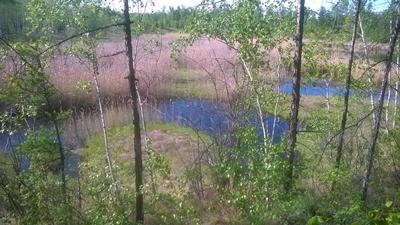Professor Mary Edwards’ insights into the rapidly changing Arctic environment

Professor Mary Edwards is a co-author of a recent policy report on the changing Arctic, produced for NERC by Public PolicyǀSouthampton. It summarises new findings from the NERC Arctic Research Program (2011-2016). She presented the findings, together with Prof Sheldon Bacon, to a cross-governmental meeting last September.
Collaboration between scientists and policymakers is important in many spheres; the need is particularly great in the Arctic as the UK is a major scientific player in the region and science lies at the core of the UK’s Arctic policy. The focus of the programme was understanding and predicting climate change in the Arctic, from both a local and a global perspective. The Arctic is warming twice as fast as the global average. Sea ice is diminishing, and landscapes are changing, affecting biodiversity and local communities. The changes also affect the global climate system via feedbacks, including effects on UK weather and climate.
As part of Professor Mary Edwards’ continued research in the Arctic, she travelled with Dr Ben Robson in June 2017 to Yakutsk, Siberia, to join with Russian scientists Dr Alla Yurova and Dr Alexander Fedorov in studying the effects of thawing permafrost using remote-sensing techniques. The study is funded by the Royal Society as part of their UK-Russia programme. The thaw is a consequence of multiple factors: climate change, fires, agricultural activity and infrastructural development. Yakutsk lies near the northern hemisphere “cold pole”, experiencing winter temperatures of -50°C and lower but has warm summers. Permafrost (perennially frozen ground) underlies the region, but this can begin to thaw when the ground surface is disturbed. As a consequence, the region features numerous lakes and basins that mark places where underlying ice has thawed and the ground has collapsed. Together with Prof Jadu Dash, the team are developing new algorithms based on remotely sensed data that can estimate recent rates of change in lake and the volume of ice lost to thawing.
Related links
- Read the policy report
- Mary Edwards’ profile
- Watch a short video of Mary talking about becoming an Arctic scientist